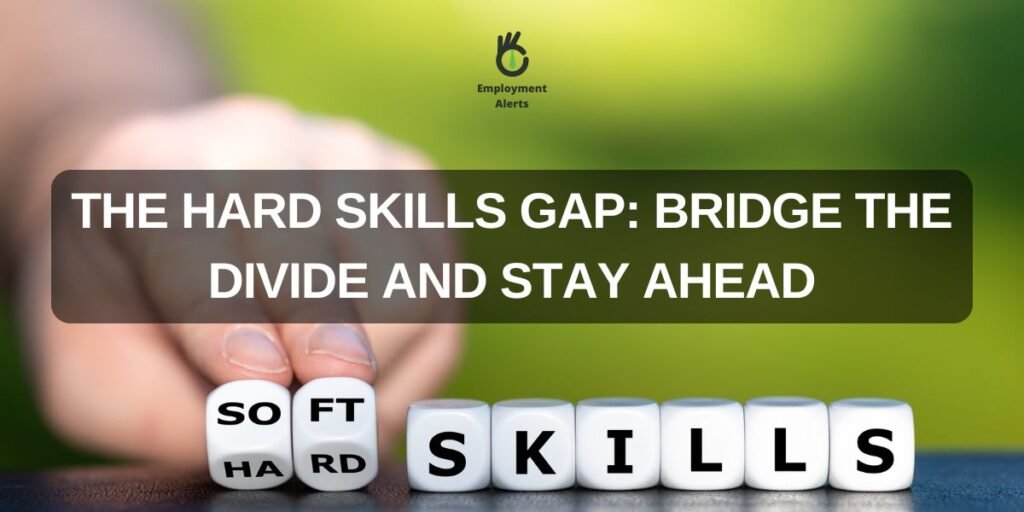The professional terrain is no longer a static landscape. It’s a dynamic labyrinth, where the paths to success constantly shift and evolve. At the heart of this maze lies the hard skills gap, a formidable obstacle for both employers seeking qualified talent and individuals striving for career advancement.
Delving Deeper: What Exactly is the Hard Skills Gap?
Imagine a job description demanding proficiency in a specific software program you’ve never encountered. That’s the essence of the hard skills gap.
It’s the chasm between the technical skills employers require (data analysis tools, programming languages, specialized equipment operation) and the skillsets possessed by the workforce. These skills are quantifiable and teachable, forming the building blocks of job-specific competence.
The gap isn’t merely about a single missing skill. It’s a complex interplay of factors:
- Technological Whirlwinds: Technology’s relentless march forward quickly renders existing skillsets obsolete. New software versions, programming paradigms, and sophisticated hardware emerge at an ever-increasing pace. Today’s cutting-edge tool might be tomorrow’s relic, demanding continuous learning from professionals.
- Shifting Sands of Industry Needs: Industries are living organisms, constantly adapting to market demands and technological disruptions. As industries evolve, the skillsets they find valuable transform as well. Yesterday’s hot commodity in finance might be irrelevant in the face of new regulations or blockchain integration.
- The Education System’s Lag: Traditional education systems, by their very nature, struggle to keep pace with the breakneck speed of change in the job market. The curriculum may prioritize foundational knowledge, leaving graduates with a solid theoretical base but lacking the specific technical skills sought by employers.
The Two Sides of the Coin: How the Gap Impacts Businesses and Individuals
The hard skills gap isn’t just an academic discussion. It has real-world consequences for both businesses and individuals:
- For Businesses: When employees lack the necessary hard skills, it leads to a domino effect of inefficiencies. Projects stall, deadlines are missed, and potential errors lurk around every corner. This translates to reduced productivity, increased costs (due to training expenses or unfilled positions), and a potential competitive disadvantage.
- For Individuals: Individuals with outdated skillsets risk becoming relics in a rapidly evolving job market. Career stagnation, missed opportunities, and even job insecurity become real possibilities. The pressure to constantly upskill and reskill can be daunting, leading to feelings of inadequacy or even anxiety.
Navigating the Labyrinth: Strategies to Bridge the Gap and Stay Competitive
The good news is that the hard skills gap, while presenting a challenge, is not an insurmountable obstacle. Here are some powerful strategies to help you navigate the labyrinth and emerge a victor:
- Charting Your Course: Continuous Learning is the Compass: Embrace a lifelong learning mindset. Dedicate time to ongoing upskilling and reskilling efforts. Explore a vast learning landscape: online courses, industry workshops, professional certifications – the options are plentiful. Many companies offer internal training programs to bridge skill gaps within their workforce.
- Building Your Skills Castle: Project-Based Learning is the Mortar: Don’t just learn – apply! Put your newly acquired skills to the test through real-world projects. Volunteer your expertise to a non-profit organization, participate in hackathons designed to tackle industry challenges, or build a personal portfolio showcasing your abilities. This hands-on experience solidifies your understanding and demonstrates your capabilities to potential employers.
- Networking: Building Bridges with Fellow Explorers: The professional world thrives on connections. Network with professionals in your field. Attend industry events, join online communities specific to your skillset, and seek out mentors who can guide you on your upskilling journey. These connections can provide valuable insights into industry trends, job opportunities, and emerging skills.
- Developing Your Soft Skills Arsenal: The Power of Complementary Skills: While hard skills are essential, don’t underestimate the importance of soft skills. Communication, problem-solving, critical thinking, collaboration – these intangible abilities are the mortar that holds your hard skills together. Soft skills enhance your technical expertise and make you a well-rounded, adaptable professional.
By adopting these strategies and cultivating a growth mindset, you can bridge the hard skills gap and ensure you remain competitive in the ever-changing job market. Remember, the professional labyrinth is not a destination, but a continuous journey of exploration and learning. Embrace the challenge, equip yourself with the necessary tools, and forge your path to success in the ever-evolving world of work.
